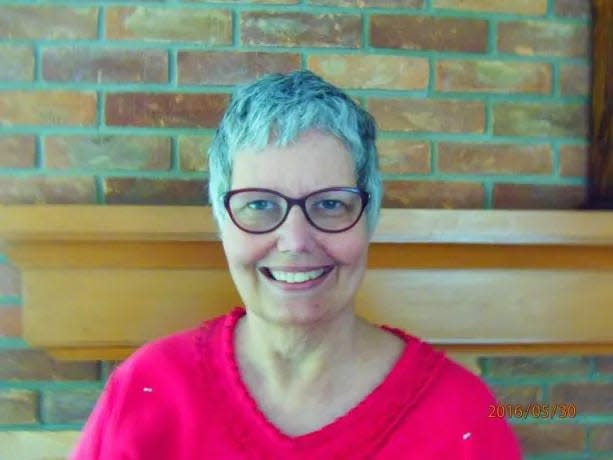Pam Taylor: As algal blooms worsen, individuals can take action

Cryin’ won’t help you
Prayin’ won’t do you no good
— “When the Levee Breaks” (Memphis Minnie and Kansas Joe McCoy, 1929; Led Zepplin, 1971; Playing for Change featuring John Paul Jones and others, available on YouTube, 2022).
That timeless classic, about the Great Mississippi Flood of 1927, memorializes heartbreaking environmental disasters. As extremes created by man-made climate change accelerate faster than ecosystems and everything within can adapt, and we continue to ruin the water and air needed for survival, these disasters are becoming more destructive, more frequent.
We need courageous elected leaders to address these issues right now. When environmental problems become life-threatening and costs to fix grow larger, elected officials whose political priority is protecting polluters, or tippy-toeing around their messes, usually ignore, deny, or lie about them, even when the proverbial levee breaks.
Credible scientists and reputable news outlets report record-shattering heat, hail, ice storms, groundwater depletion, harmful algal blooms (HAB), desertification, wildfires, downpours, floods, jet stream changes, and wind damage occurring more often. From personal experience, I’ve learned which patterns are important here, and when to start thinking about cyanobacteria (harmful algal blooms) in local streams and lakes. I write every year around now about this. Every year, our most dangerous and widespread local pollution problem gets worse.
Despite seriously flawed NOAA/Heidelberg models predicting a smaller-than-normal HAB in the Western Lake Erie Basin this year, I’ve been concerned about the possibility of an earlier, bigger bloom based on what’s happening in local tributaries.
I wasn’t surprised when Rep. Tim Walberg’s office published his op-ed July 9 in The Monroe News and July 13 in The Daily Telegram celebrating a predicted smaller-than-average bloom this year, congratulating his favorite agricultural programs that fail to keep HAB-causing dissolved nutrients and pathogens out of surface water that flows downstream. Like Captain Peter “Wrongway” Peachfuzz, his cohort is wrong about many things.
Walberg didn’t mention the upgraded July 5 NOAA/Heidelberg WLEB HAB report (released before his July 9 op-ed), once NOAA transitioned from modeled predictions to reporting actual conditions, that stated, “Harmful algal blooms are forming in some parts of Lake Erie earlier than typical.” On July 30, NOAA’s HAB report (with map) said, “(t)he bloom extends from Pointe Mouillee, MI to just west of Port Clinton, OH and extends into the western basin off of Monroe, MI. Sandusky Bay has a local bloom of mixed cyanobacteria” and that low levels of toxins are already present.
Do tell. We haven’t even entered the heart of HAB season.
Repeating the same elected officials’ failures gets kind of boring, so here’s a public service announcement instead — resources for busy people to help them protect themselves. But, first, if you think you or your animals have come into contact with cyanobacteria, or swallowed it, either in surface water or treated drinking water, see your health care professional or veterinarian immediately.
Here’s a helpful Michigan source about HABs that includes health information and photos for identification purposes (www.Michigan.gov/HABs). Michigan’s just starting to get a handle on this, so a good starting place is the Frequently Asked Questions (FAQ) page. My favorite resource here for photos and general information is the Kentucky Algae ID Guide, but in the end, potentially dangerous cyanobacteria can’t be identified just by looking at photos or water. Samples must be taken and analyzed. Make sure people and pets avoid water with surface scum or that smells fishy, grassy, earthy, or like a swamp, in lakes and streams.
If you see suspicious-looking algae, immediately report it by calling EGLE’s Environmental Assistance Center at 800-662-9278 or emailing AlgaeBloom@Michigan.gov. Then, email or send a letter (don’t call; keep a written or electronic record) to the Lenawee County or Monroe County health department, your county commissioner, your local mayor, your commission or council president. If your town’s treated drinking water that comes from your faucet smells (see above), looks, or tastes bad, also email your local utilities department director. Your own activism is always your best advocate.
Pam Taylor is a retired Lenawee County teacher and an environmental activist. She can be reached at ptaylor001@msn.com.
This article originally appeared on The Daily Telegram: Pam Taylor: As algal blooms worsen, individuals can take action
